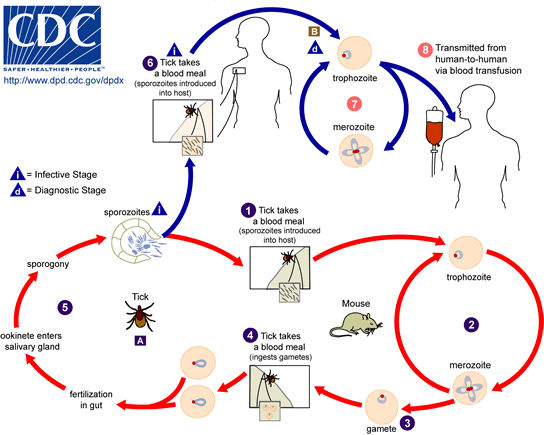
Humans enter the cycle when bitten by
infected ticks. During a blood meal, a Babesia-infected tick
introduces sporozoites into the human host ![]() .
Sporozoites enter erythrocytes
.
Sporozoites enter erythrocytes
![]() and
undergo asexual replication (budding)
and
undergo asexual replication (budding)
![]() .
Multiplication of the blood stage parasites is responsible for the clinical
manifestations of the disease. Humans are, for all practical purposes,
dead-end hosts and there is probably little, if any, subsequent transmission
that occurs from ticks feeding on infected persons. However, human to human
transmission is well recognized to occur through blood transfusions
.
Multiplication of the blood stage parasites is responsible for the clinical
manifestations of the disease. Humans are, for all practical purposes,
dead-end hosts and there is probably little, if any, subsequent transmission
that occurs from ticks feeding on infected persons. However, human to human
transmission is well recognized to occur through blood transfusions
![]() .
.
Note: Deer are the hosts upon which the adult ticks feed and are indirectly part of the Babesia cycle as they influence the tick population. When deer populations increase, the tick population also increases, thus heightening the potential for transmission.